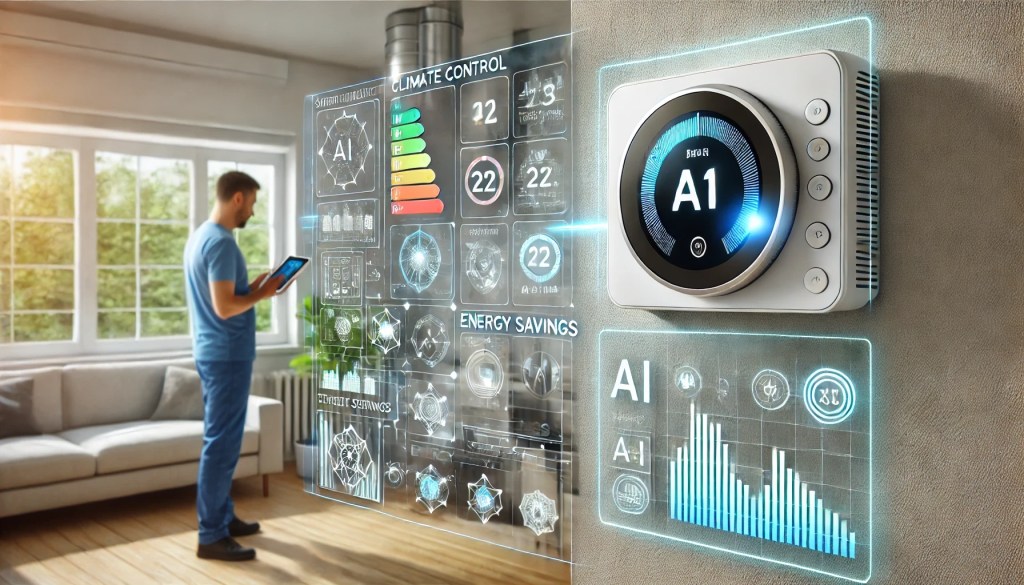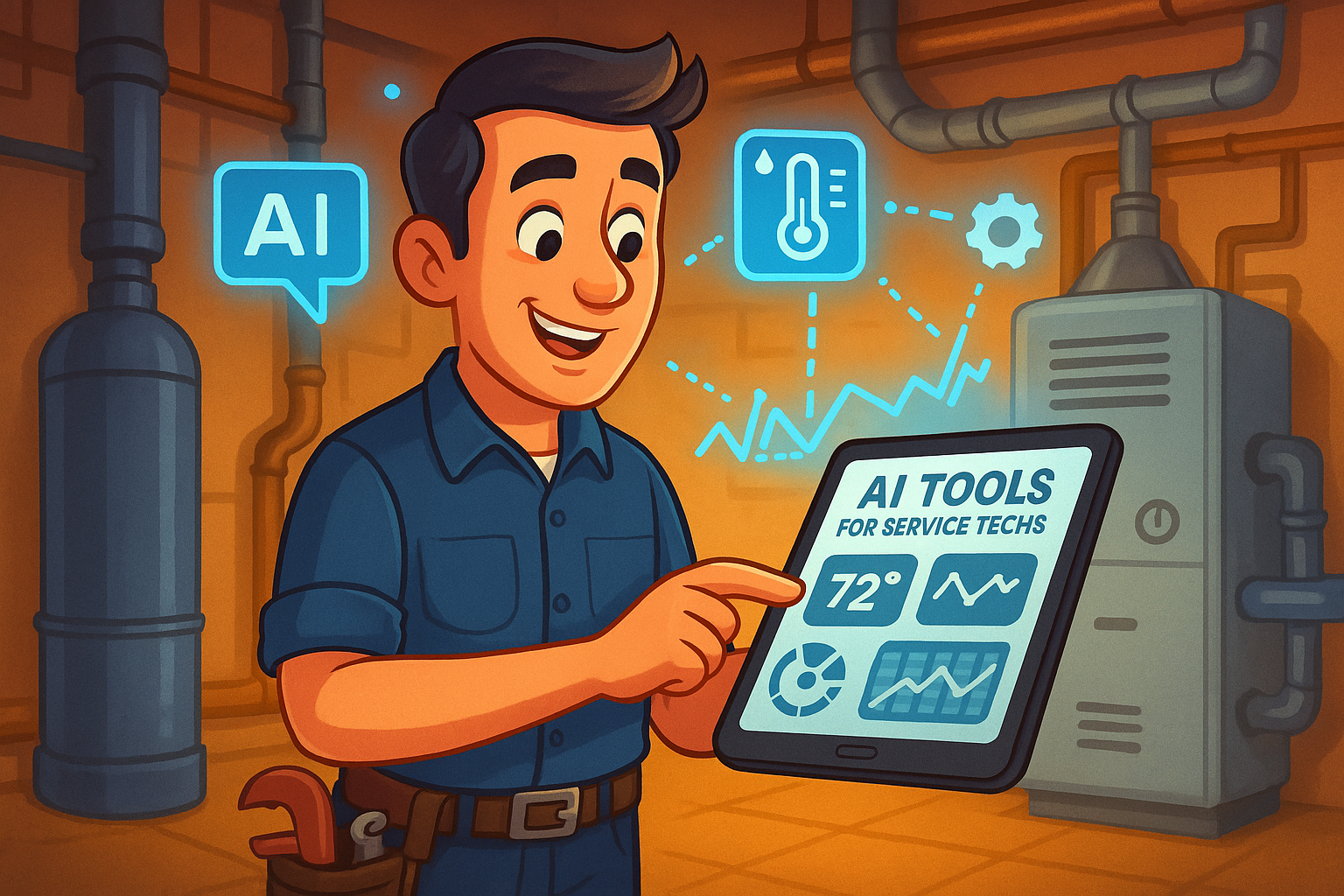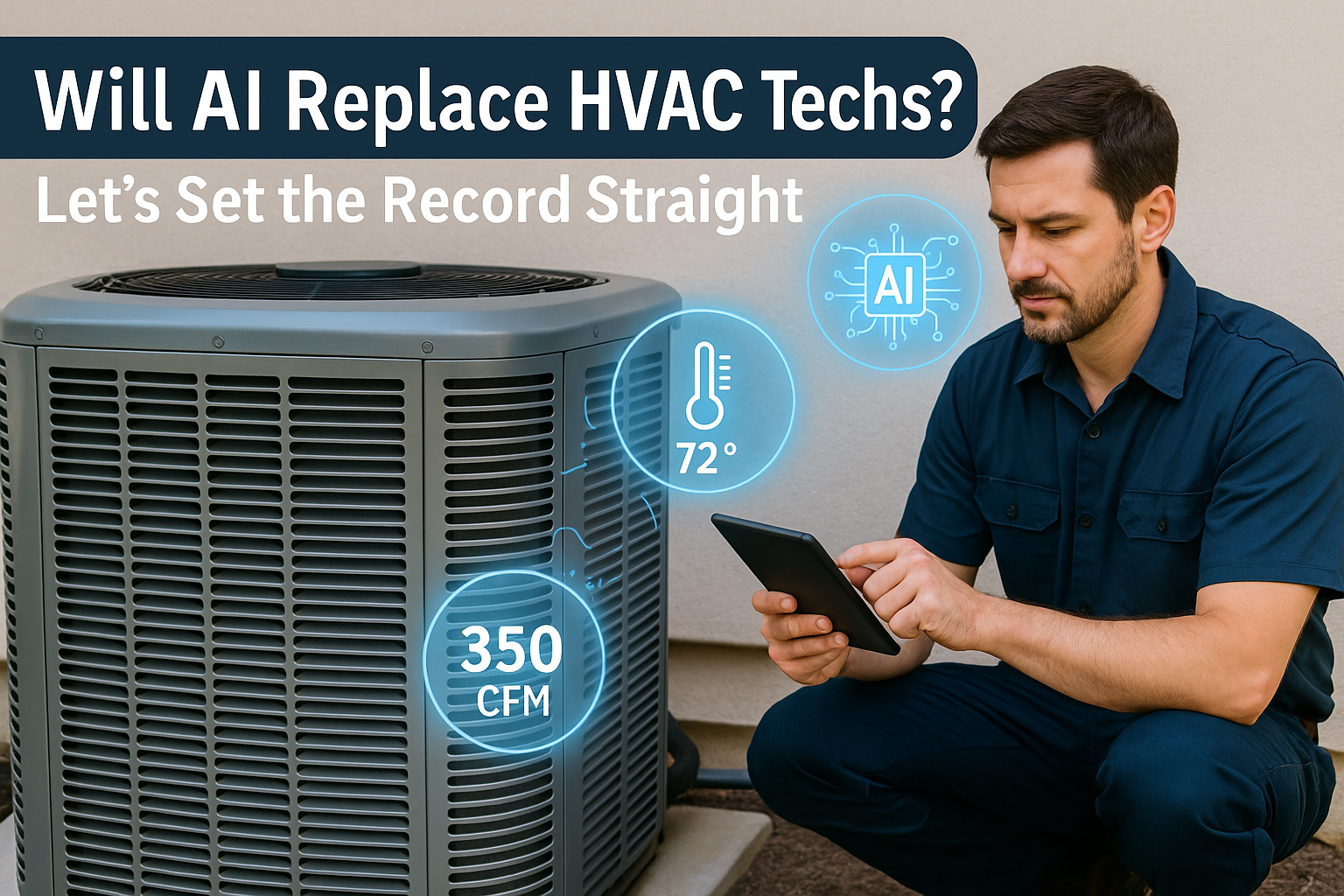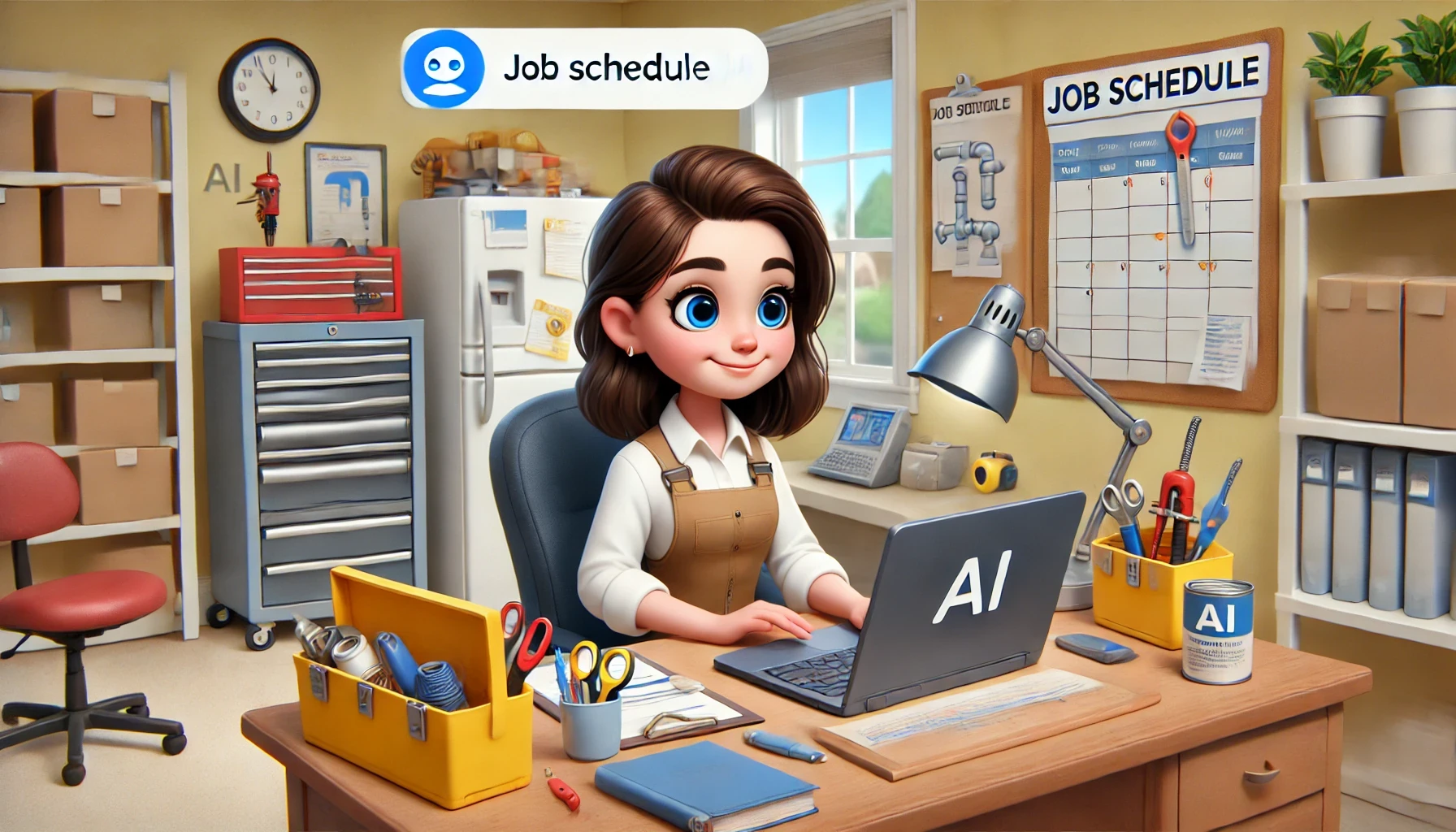How AI is already shaping the way HVAC systems operate in homes and businesses.

Introduction
Here are some of the way AI is already working behind the scenes in many of the tools and systems we use every day. From smart thermostats that learn user habits to AI-driven building automation that optimizes entire commercial properties, artificial intelligence is making HVAC systems more efficient, reliable, and user-friendly.
Most people don’t even realize how much AI is already controlling their indoor comfort. But for HVAC techs, understanding how these technologies work is becoming increasingly important. The industry is shifting, and those who embrace AI-driven tools will have a competitive edge over those who don’t.
In this post, we’ll break down how AI is being used in residential, commercial, and industrial HVAC applications—and what this means for technicians in the field.
AI in Residential HVAC: Smart Thermostats & Connected Homes
How Smart Thermostats Use AI
Smart thermostats, like Nest, Ecobee, and Honeywell T-Series, go beyond basic programmable settings. These devices use machine learning to understand user habits, adjust settings automatically, and optimize comfort while reducing energy waste.
Here’s how AI enhances smart thermostats:
✔ Learning User Behavior: The thermostat tracks when people are home and adjusts temperatures accordingly.
✔ Weather Adaptation: AI integrates with weather data to prepare for upcoming temperature changes.
✔ Occupancy Sensing: Some thermostats use motion sensors or geofencing to adjust settings when no one is home.
✔ Voice Control & Integration: AI-powered thermostats work with Google Assistant, Alexa, and Siri, allowing hands-free control.
Real-World Example: Nest Learning Thermostat
The Nest Learning Thermostat creates a custom schedule based on usage patterns. If a homeowner frequently lowers the temperature before bed, the thermostat learns this behavior and does it automatically. Over time, it improves efficiency by making small adjustments that balance comfort and energy savings.
What This Means for HVAC Techs:
- Customers may call about thermostat connectivity or integration with HVAC systems.
- Techs should understand WiFi connectivity issues, firmware updates, and compatibility with different HVAC units.
- Some AI-driven thermostats provide system diagnostics, offering insights into filter status, airflow issues, or inefficient cycling—which can help techs troubleshoot faster.
AI in Commercial HVAC: Smart Building Automation
Large-scale buildings rely on Building Management Systems (BMS) to maintain climate control. AI-enhanced automation takes this even further, managing HVAC, lighting, and ventilation in real time to optimize energy usage.
How AI Improves Commercial HVAC Systems:
✔ Self-Adjusting Airflow: AI can direct airflow based on real-time occupancy, preventing overcooling or overheating empty rooms.
✔ Predictive Maintenance: AI tracks system performance and alerts facility managers to potential failures before they happen.
✔ Energy Optimization: AI continuously analyzes energy consumption and adjusts settings for maximum efficiency.
Real-World Example: AI-Driven Building Automation
A hotel HVAC system uses AI to track guest check-in/check-out patterns. When rooms are unoccupied, the system reduces heating/cooling to save energy. When a guest arrives, AI adjusts the temperature to their preference based on past stays.
What This Means for HVAC Techs:
- Expect more service calls related to BMS software updates and integrations.
- AI systems will reduce emergency breakdowns but may require new troubleshooting methods.
- Technicians will need to collaborate more with IT professionals as AI-driven systems integrate with cloud-based platforms.
AI in Industrial HVAC: Large-Scale System Optimization
Industrial facilities—like manufacturing plants and data centers—have massive HVAC demands. AI helps regulate airflow, cooling, and power consumption on a much larger scale.
How AI Optimizes Industrial HVAC:
✔ Advanced Fault Detection & Diagnostics (FDD): AI detects anomalies in pressure, airflow, and equipment vibration to prevent breakdowns.
✔ Automated Climate Zoning: AI controls multiple climate zones based on production requirements, preventing unnecessary heating/cooling.
✔ Self-Healing Systems: Some AI-driven systems can automatically adjust dampers, fans, or valves to correct minor issues without human intervention.
Real-World Example: AI-Powered Data Center Cooling
Data centers generate massive heat loads from servers. AI-powered cooling systems analyze real-time temperature and adjust airflow to prevent overheating. Google’s AI HVAC system reduced their cooling costs by 40% by making automatic micro-adjustments to their airflow patterns.
What This Means for HVAC Techs:
- AI will minimize system failures but increase the demand for specialized techs who understand AI-driven analytics.
- Service calls may shift from mechanical failures to software and calibration issues.
- Training on AI-enhanced FDD systems will become essential for techs working in industrial settings.
What’s Next? The Future of Everyday AI in HVAC
AI is becoming more integrated into smart home devices, commercial automation, and industrial climate control systems. But what’s next?
🔹 Self-Diagnosing HVAC Units: Future systems may automatically order replacement parts before a failure occurs.
🔹 Voice-Controlled HVAC Systems: AI voice assistants may learn user preferences and adjust settings without manual input.
🔹 AI-Driven Energy Audits: AI could analyze entire building energy usage and suggest upgrades in real time.
Conclusion: AI is Already Here—Are You Ready?
AI is no longer a future concept—it’s already shaping how we heat, cool, and optimize indoor environments. Whether you’re installing smart thermostats, servicing a BMS, or working on industrial FDD systems, AI is becoming an everyday tool in HVAC.
For HVAC techs, learning AI-enhanced systems isn’t optional—it’s the next step in staying competitive.
Want to dive deeper?
📩 Sign up for my newsletter to stay ahead of AI trends in HVAC.
📖 Watch out for my upcoming book, AI 4 HVAC, for more in-depth insights.
💬 Drop a comment—are you already working with AI-driven HVAC systems? Let’s talk about it!



